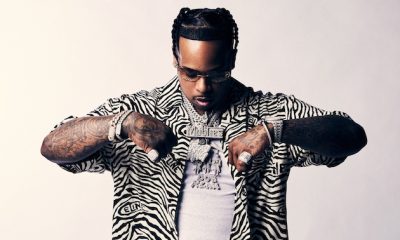News
From the Ring to the Boardroom: Lessons in Leadership from the WWE Empire

WWE’s Roots: Building More Than Entertainment
The rise of WWE from a small regional wrestling promotion to a global entertainment powerhouse is an epic tale of leadership and reinvention. In the mid-20th century, wrestling was a niche interest controlled by territorial promoters. WWE, originally known as the World Wrestling Federation, saw an opportunity to connect with a much wider audience by blending action, drama, and pageantry. Over the years, key leaders have guided this transformation with a mix of showmanship and strategic thinking. They nurtured superstars, staged elaborate live events, and invested in television production, proving that alliances between creativity and business sense can birth entirely new industries. The legacy of Vince McMahon, as a major architect behind WWE’s ascension, demonstrates that bold vision, steady risk-taking, and a relentless work ethic can drive growth on an unprecedented scale. His approach reshaped professional wrestling and blurred the lines between sport and scripted entertainment. This shift opened doors for crossover success in film, media, and global branding, turning WWE into a cultural fixture. It also established a precedent for niche forms of entertainment to become mainstream phenomena.
Adaptability: Surviving and Thriving in a Changing World
WWE’s growth has been fueled by its readiness to pivot and embrace new technological and cultural shifts. In the late 1980s and 1990s, increased competition pushed WWE to innovate in wrestling styles and how audiences consumed content. Adaptability became a survival skill from the national expansion that saw WWE on cable networks to the revolutionary pay-per-view era. Then came the internet age and WWE’s willingness to bet big on the WWE Network—a digital subscription service that reached millions. The organization’s resilience is a powerful testament that businesses must understand and embody multiple leadership styles to navigate disruption. It’s rarely just about reacting quickly; it’s about anticipating audience needs and having the courage to adjust course, even when that means making hard choices.
Storytelling: The Heart of Engagement
What has always set WWE apart is its unrivaled command of storytelling. Spectators don’t just tune in for wrestling—they tune in for narratives of triumph and heartbreak, bold characters, and epic rivalries stretching over the years. These stories spark emotional investment and loyal fandom. In leadership, the ability to craft and share a compelling narrative is a force that aligns teams and fosters motivation. For example, articulating why a company exists or where it’s headed is essential in uniting employees behind a goal. A great story doesn’t just convey information—it mobilizes and inspires. Whether rallying a locker room or a staff meeting, compelling storytelling is an indispensable leadership skill that creates a more profound sense of purpose.
Notable Moments That Shaped Leadership Styles
WWE’s leadership is defined by bold decisions during pivotal moments. During the “Monday Night Wars” in the 1990s, WWE responded to fierce competition from WCW by innovating with engaging storylines and relatable characters, successfully expanding wrestling’s mainstream appeal. In 2014, the launch of the WWE Network marked a significant shift toward global streaming. These instances highlight the importance of risk-taking and decisive action in leadership, demonstrating that transformative moves often require substantial investment in new models and technology, paired with trust in the team’s capabilities. Each significant era in WWE showcases a commitment to learning quickly and acting with conviction.
Inclusivity and Diversity in WWE Leadership
Diversity and inclusion are now key components of WWE’s brand strategy. Over the past decade, there have been noticeable shifts toward genuine representation in the roster and leadership. Initiatives showcasing women and global superstars have broadened WWE’s appeal to audiences. This focus on inclusivity shows that diverse voices lead to more innovative strategies. Studies indicate that diverse executive teams often outperform their peers, demonstrating that celebrating different perspectives can enhance brand connection and employee engagement.
Innovation as a Leadership Mandate
WWE’s leadership emphasizes innovation, creating signature match types like the Royal Rumble and Money in the Bank, transforming wrestling and live events with advanced production and crowd engagement. By leveraging social media and digital platforms, WWE builds connections and attracts new fans year-round. This focus on challenging tradition and encouraging bold ideas is crucial for its success. Instead of reacting to trends, WWE often leads the market, setting the agenda for others to follow.
Translating In-Ring Lessons to the Boardroom
Leadership in WWE extends beyond headline matches; it involves applying lessons from the ring to business. Trust and teamwork are essential in wrestling, requiring performers to adapt and coordinate in real-time. These principles resonate in corporate environments, where clear communication and resilience drive success. Leaders outside of entertainment should encourage collaboration, empower teams to tackle challenges, and view setbacks as growth opportunities. Observing successful partnerships in WWE shows that enduring victories come from collective efforts built on practice and mutual respect.
-

 Rappers9 months ago
Rappers9 months agoGloRilla Net Worth: Height, Age, Bio, Real Name & Career
-

 Businessman9 months ago
Businessman9 months agoBrandon Fugal Net Worth: How Rich is Skinwalker Ranch Owner?
-

 Rappers3 years ago
Rappers3 years agoBigXthaPlug Net Worth: Height, Age, Real Name & Career
-

 TV Stars9 months ago
TV Stars9 months agoKaleb Cooper Net Worth: How Rich is the TV Star Actually?
-

 Internet Stars3 years ago
Internet Stars3 years agoMufti Menk Net Worth: How Rich is the Islamic Speaker Actually?
-

 TV Stars9 months ago
TV Stars9 months agoCarla Diab Net Worth: How Rich is the TV Star Actually in 2025?
-

 Businessman2 years ago
Businessman2 years ago7 Proven Lead Generation Strategies To Implement in 2023
-

 Rappers9 months ago
Rappers9 months agoDD Osama Net Worth: Height, Age, Real Name, Career & More



















You must be logged in to post a comment Login